.
.
The Accounting Cycle
Course Length: 1 or 2 days
This course maps out the accounting cycle: balance sheets, income statements, ledger transactions, trial balances, and closing entries. Ideal for beginners, this course explains single-entry and double-entry accounting and cash versus accrual accounting.
Part 1: Overview of the Accounting Cycle
Part 2: Cash or Accrual Accounting?
Part 3: Basic Recordkeeping Systems
Part 4: Ledger and Journal
Part 5: Adjusting Entries
Part 6: Closing Entries
Part 7: The Balance Sheet and Income Statement
Part 8: Special Consideration: Inventory
Part 9: Business Decisions
.
.
.
.
.
.
Accounting Essentials
Course Length: 1 or 2 days
To run a business, numbers must be taken into account and factored into everyday decision-making, both major and minor. Understanding the numbers associated with day-to-day operations is no longer just the domain of the finance and accounting departments–everyone from lower-level staff to senior managers should learn the fundamentals of the cost of the organization’s product or service, the price strategies involved, and the impact that short- and long-term decisions have on the bottom line.
ACCOUNTING ESSENTIALS is an introductory course that teaches the basics of finance, accounting, and economic strategies in an easy-to-follow, easy-to-understand format complete with glossaries, diagrams, and self-tests. A companion book to this course is THE ACCOUNTING CYCLE, a book by Jay Jacquet. This course is especially for non-financial managers or new business owners, and can be used in an academic setting. It is an indispensable primer for learning and understanding accounting fundamentals, such as cash and accrual accounting, basic recordkeeping, ledger and journal entries, and financial statement preparation.
Part 1: Getting the ‘Right’ Numbers
Part 2: Review of the Financial Statements
Part 3: Making Money
Part 4: Identifying Costs and Their Behaviors
Part 5: Controlling Costs
Part 6: Am I Breaking Even?
Part 7: Operating Leverage
Part 8: Influences on Pricing
Part 9: Making the Numbers Work for You
.
.
.
.
.
.
Basic Bookkeeping
Course Length: 1 or 2 days
Numbers! Numbers! Numbers! Wherever you go, you are bound to see them. On addresses, license plates, phones, prices, and of course, money! Numbers connect us all to each other in many more ways than we might imagine. Essentially, our world revolves around numbers.
Some of us enjoy dealing with numbers while others may have a fear of them, or even a phobia. For those of you who have already recognized and appreciate the impact that numbers actually have on just about everything, you deserve a cookie. Welcome to Basic Bookkeeping!
Module One: Getting Started
Module Two: Basic Terminology (I)
Module Three: Basic Terminology (II)
Module Four: Accounting Methods
Module Five: Keeping Track of Your Business
Module Six: Understanding the Balance Sheet
Module Seven: Other Financial Statements
Module Eight: Payroll Accounting / Terminology
Module Nine: End of Period Procedures
Module Ten: Financial Planning, Budgeting and Control
Module Eleven: Auditing
Module Twelve: Wrapping Up
.
.
.
.
.
.
Basics of Budgeting
Course Length: 1 or 2 days
The title of this course says it all. This course will cover virtually every aspect of budgeting; from preparing income statements and company expense reports, to developing your own personal plan. Understanding the basics of budgeting will help your career and the organization you manage.
Part 1: Basic Information
Part 2: Effective Planning in Your Organization
Part 3: How to Build Plans Efficiently
Part 4: How to Build a Strategic Plan
Part 5: Annual Operating Plan Preliminaries
Part 6: How to Budget Sales
Part 7: How to Budge Cost of Sales
Part 8: How to Budget Labor Expense
Part 9: How to Budget Other Expenses
Part 10: How to Budget Depreciation Expense
Part 11: Balance Sheet and Cash Plans
Part 12: Budget Reviews (from Both Sides)
Part 13: Planning and Executing a Budget Process
Part 14: How to Create an Adjusted Plan
Part 15: Forecasting and Controlling Results
.
.
.
.
.
.
Budgets and Financial Reports
Course Length: 1 or 2 days
Everyday businesses deal with budgets and financial reports in some form or fashion. At minimum, business managers review budget numbers and run financial reports for decision-making and reporting to shareholders and Federal regulators once a month. Many companies devote the last few months of the calendar year to creating budgets for the next calendar year. In addition, organizations create and disseminate year-end financial reports to investors.
The goal of this workshop is to give the participant a basic understanding of budgets and financial reports so they can hold relevant discussions and render decisions based on financial data. This course will define key terms like ROI, EBIT, GAAP, and extrapolation. Furthermore, this one-day course will discuss commonly used financial terms, financial statements, budgets, forecasting, purchasing decisions, and laws that regulate the handling of financial information. Before we begin, let us get to know more about each other.
Module One: Getting Started
Module Two: Glossary
Module Three: Understanding Financial Statements
Module Four: Analyzing Financial Statements (I)
Module Five: Analyzing Financial Statements (II)
Module Six: Understanding Budgets
Module Seven: Budgeting Made Easy
Module Eight: Advanced Forecasting Techniques
Module Nine: Managing the Budget
Module Ten: Making Smart Purchasing Decisions
Module Eleven: A Glimpse into the Legal World
Module Twelve: Wrapping Up
.
.
.
.
.
.
Financial Analysis
Course Length: 1 or 2 days
This course provides more advanced, useful information on topics such as forecasting, budgeting techniques, corporate statements, and the use of common stock and debts for capitalization. This course is ideal for middle managers, small business owners, and entrepreneurs.
Part 1: Reviewing the Basics
Part 2: Corporate Financial Statements
Part 3: Asset Management
Part 4: New Ratios
Part 5: The Interaction of Ratios
Part 6: Financial Planning
Part 7: Reading an Annual Report
.
.
.
.
.
.
.
Financial Management: Basic
Course Length: 1 or 2 days
This course introduces students to the fundamentals of financial management. Students will become familiar with basic accounting concepts and terms, track business transactions, use universal accounting tools such as the general journal, general ledger, and trial balance. Course activities also cover the purpose and how to use the four financial statements-the income statement, the balance sheet, the cash flow statement, and the statement of stockholders’ equity. Finally, students learn how to create and enforce a budget by analyzing financial statements, setting objectives, and monitoring performance.
Unit 1: Basics of accounting
Unit 2: Accounting cycle
Unit 3: Income Statement
Unit 4: Balance Sheet
Unit 5: Other financial statements
Unit 6: Budgeting
.
.
.
.
.
.
.
Financial Management: Advanced
Course Length: 1 or 2 days
This course builds on the fundamentals taught in Financial Management: Basics. In the Advanced course, students learn how to reconcile a bank statement, choose a reconciliation reviewer, control an organization’s cash, and prepare a Cash Flow Statement. Course activities also cover the various tools available for analyzing financial statements. Students will also learn how to calculate inventory value and depreciation, and why organizations use accounting methods when reporting financial information on financial statements.
Unit 1: Cash management
Unit 2: Analysis of financial statements
Unit 3: Analysis of Income Statements
Unit 4: Inventory and depreciation
Unit 5: Application of accounting methods
.
.
.
.
.
.
.
Understanding Financial Statements
Course Length: 1 or 2 days
Everything you always wanted to know about those confusing financial statements but were too embarrassed to ask! This friendly primer of basic business finances takes you step-by-step through all the fundamentals — from balance sheets to profit and loss statements — and translates them into meaningful, usable information. A beginner’s bible!
Part 1: Basics of Financial Statements
Part 2: Understanding Ratios and Percentages
Part 3: Four Types of Ratios
Part 4: How to Perform a Ratio Analysis
Part 5: How to Perform an Expense Analysis
Part 6: How to Control Your Business
.
.
.
.
.

